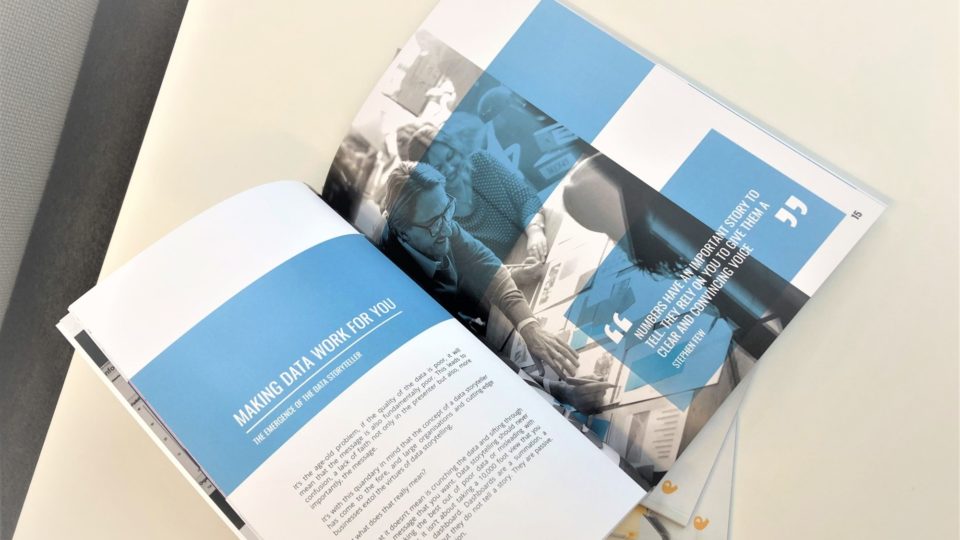3 steps to help you integrate data as a regular part of your presentation strategy
Data is a tricky field to navigate across many businesses. It can be a source of conflict within business senior leadership, whether down to an ingrained cynicism towards data, or an over-eagerness to use it data in every communication piece. To be blunt, many business’s approach to data is disorganised and scattergun.
The good news is that business leaders new recognise effective communication as a leadership imperative…and data has an important part to play. Not only can it play an important part in your commercial communications (it can mean the difference between sealing a deal and missing out on a potential opportunity), effective communication can also help to foster a good working relationship between you and your team, improving morale and efficiency. The addition of data raises the stakes but, when used selectively, at the right time and delivered in the optimum way, can have a hugely positive impact.
So, the question still remains – where do you begin?
We have devised some simple steps to help you integrate data as a regular part of your presentation creation strategy:
Get the balance right
If your leadership team are sceptical about the use of data, then this will likely have a domino effect within your wider business. Resolve this issue head-on by referencing external proof points to address the cynicism and demonstrate the relevance to your audience. Equally, this will build a sense of confidence and respect for data among the wider team.
On a different side of the same coin, throwing too much data at your audience can prove to be a fatal flaw, your presentation will turn out more confusing than convincing. You should think of data like seasoning, too much and it’s overpowering, it should be used as a supporting component to other elements. This is the best way to ensure long-term impact.
A great tool for getting the balance right is Audience Heatmapping. It is a clear way to demonstrate people’s differences. It allows you to focus on understanding your audience better, which in turn allows your presenter to determine the best way to engage with them throughout the presentation.
Never underestimate the power of a good story
Your main priority should always be answering the most pressing questions your audience face. Relying on headline hype, infographics and snapshot moments will only generate short term enthusiasm.
The key to success is striking a chord with the audience on a personal level, you should relate to your audience’s issues, concerns and problems. This will establish a realistic human connection.
The best way to do this is to weave data into a narrative that breathes understanding and passion into your message. By doing this you will demonstrate a deeper knowledge of the data and you will keep your audience gripped.
What you can achieve from this is a believable call to action that your audience can follow to deliver your intended results.
Beware of data overload
Trying to identify the right data is like playing a huge game of ‘Where’s Wally?’ It is very tempting to take the easy route and collect and analyse large collections of data rather than take a fine-tooth comb and pick out relevant information.
Selecting the right data becomes a lot easier when it is part of a presentation story. To avoid data clutter, you should ask yourself these two questions: What does it communicate and how is it valuable? And, when and how can I use it in my presentation? If you’re struggling to find the answer, you can probably scrap it.
Too much data will throw a spanner in the works in terms of communication. Data stories need to stick to a core narrative to deliver results.
To learn more about how to bring your data to life through storytelling, download Data Has A Story To Tell here or get in touch with our presentation consultancy team.




